How to Build a Successful Niche Blog for a Consistent Monthly Income
Posted onThere’s a reason more and more people are turning towards blogging as a secondary source of income. In fact, many have become full-time bloggers and doing much better than they did working a traditional job.
We are living in the digital age and there aren’t many professions that offer a better combination of freedom, work-life balance, and income growth than blogging. And to succeed with blogging as a beginner, starting a niche blog is probably one of the easiest ways.
So this post will be your complete guide to building a successful niche blog that generates a significant income from you consistently, month after month.
We are sure that has got you excited, so let’s cut right to the chase.
Choosing the Right Niche
If you choose the right niche, you’re probably almost halfway there with a successful niche blog. Enough said!
Let’s discuss the different important areas of choosing the right niche below.
Competition of the Niche
When it comes to building a successful niche blog, it only makes sense that the most important factor in choosing the niche itself. Just to give you a quick idea, you could put tens of hours of work every week into your blog for as long as a year or two, and still make nothing, if you end up choosing a niche that’s too competitive for you.
And it does happen. Niches like insurance, gambling, and most finance sub-niches as well are just way too competitive for newbies or those without a large amount of capital to put into SEO and marketing of their blog and make it successful in those niches.
Profitability of the Niche
So what you would want to do is find a niche that’s less competitive, yet allows good room for profitability. The profitability part is important too.
Say for example if a particular meme-related niche is very less competitive, it may still not be a good niche as it would be hard to make a good consistent income out of it due to the nature of the niche.
Just consider a few things when trying to gauge the profitability of a niche. Is there a good demand for products in that niche (especially if you’re looking to monetize it using affiliate marketing, more on that later)? Is the niche audience willing to spend money? Would there be advertisers willing to pay to market to the users in that niche?
The answers to these questions are a good starting point.
Going as Specific as You Can
Another thing to note here is that the more specific you get with your niche, the less competitive it becomes. So again for example, instead of trying to start a kitchen blog you may want to start a blog on kitchen remodeling.
That isn’t a real example and kitchen remodeling isn’t necessary a good niche either, but I hope you get the idea here.
Evergreen Nature
When you’re after a consistent monthly income, you can’t go with a niche that’s seasonal or going to be short-lived. Many bloggers own multiple niche blogs so it’s fine for them to have some blogs in seasonal or “temporary” niches, but if you’re just starting out and looking to make money consistently out of your blog, then you must go with an evergreen niche.
Let us quickly clarify what we said a bit further by giving you an example for each of them. A temporary niche would be something based around a movie or a series of movies. When the hype around those movies dies down, the niche would die down as well.
As for a seasonal niche, you can think of something like winter sports. If you’re in this niche, your traffic and earnings would go down significantly in the summer months.
An evergreen niche, on the other hand, would be something based around sports in general, say baseball for a specific niche, as well as anything related to fitness, home improvement, woodworking, and so on.
Are You Interested or Passionate About the Niche?
However, there’s one more aspect to choosing the right niche after making sure it’s less competitive and fairly profitable. And it’s your interest or passion. Do you really have an interest in the niche you’re looking to make a blog in? Are you at least somewhat passionate about it?
Sure, many bloggers make niche blogs about some really weird topics and still succeed, but then they are either very committed to making it successful and can push themselves to do a lot of boring work, or as it happens in most cases, they have the money to hire writers who can write content in those niches for them.
If you choose a niche you’re not interested in at all, it would lead to procrastination in writing content on different topics in that particular niche. And most niche blogs need a fairly large amount of content to succeed and make a good income for you.
So try to also make sure you have some amount of interest in your niche, especially if you can’t afford to hire writers to write content for you.
Doing Keyword Research
So while you can tell a lot about the niche just by carefully considering the things we explained above, you need to go a step further by doing keyword research after you finalize a few potential niches.
The keyword research tells you about the following important metrics of your niche.
- Whether the niche is big enough for there to be a good number of people looking for products, information, or help?
- In most cases, you would also be able to get a good idea about the profitability of the niche by doing keyword research
- Finding the right sub-niche to target so that you can strike the perfect balance between competition and profitability
- Finding the right keywords to target so that you can get the most out of the time you invest into the blog
So let’s find out how to find the right keywords to target and validate your niche before starting a blog in it.
Now, there are multiple ways of doing keyword research – some free and some paid – but let’s just use a simple method using a free tool called Ubersuggest by Neil Patel.
Once you’re on Ubersuggest, put some general or potential main keywords into the tool. In our case, we simply took the keyword we discussed above: kitchen remodeling.
Here’s what we got at the top.

Keyword research using Ubersuggest
The search volume basically means the number of people searching for this exact keyword in Google every month. Anything over 1,000 is a good number to target here when just starting out given the competition is on the lower side and the profitability of the keyword is in the acceptable range.
However, if you’re into a slightly competitive niche like the one we are using as an example – and if you find keywords with a good CPC – then you can go lower as well. The thing is, more often than not, your post will cover more search volume than that particular keyword as if it ranks, it would rank well for other relevant keywords as well.
The SEO difficulty is a very useful metric too, but you must only use it as an indicator to weed out the obvious extremely competitive keywords. Anything over 40 here, especially when starting out, is usually a must-avoid keyword.
In fact, if you’re a beginner, you would ideally want the competition score to be less than 20.
The paid difficulty is mostly for people looking to use Google AdWords to show ads to their potential target audience, but also gives you a good idea of the profitability. Anything over 60 here should mean that the profitability is definitely there.
Finally, the Cost Per Click (CPC) is another very important metric to get an idea of the profitability of the keyword. Anything over $1 here is good to go, so in this case, a CPC of $4.73 is excellent.
However, as you can tell, the SEO difficulty is the deal breaker for us here. It’s not practically possible for a small niche blog to rank well for this keyword by outranking some million-dollar corporations.
But let’s scroll down the page a bit to see what else Ubersuggest has to offer us.
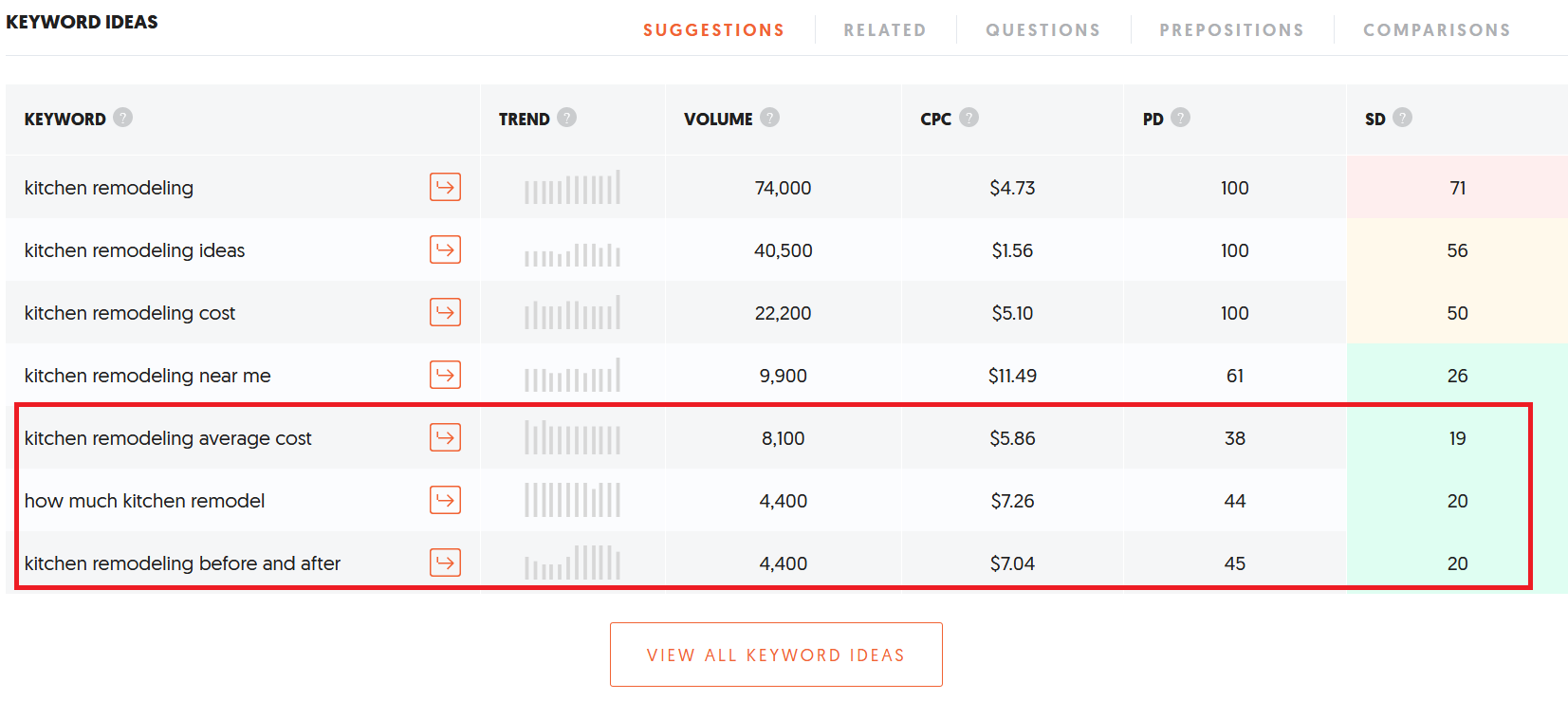
Keyword Ideas
It gives you many other related keyword ideas as well. Dig deeper into the ones that have a competition score of 20 or less. We have highlighted some example keyword ideas above that may be worth targeting.
They are all not necessarily good keywords to target, but potential good keywords that are worth researching further.
And a fairly effective way of researching them further is simply putting the keyword into Google and checking out the first 10 results. Do you think you can do better than them with respect to the overall quality of content? If yes, then in most cases, you would want to go for it.
Do the top 10 results include big names in the industry or niche that everyone knows about? If not, then again you’re probably on the right track.
If you find a good bunch of fairly high volume and profitable keywords to target then the niche you have chosen may have the room you need to build a successful niche blog.
Buying a Domain Name and Hosting
Once you have decided on the niche and found yourself a good initial set of keywords to target after starting your niche blog, you would need to buy a domain name for your blog and also a hosting service to host your website.
Domain Name
As for choosing the right domain name, there are primarily two different approaches here.
You can buy a brandable domain name that helps you build an authority website and establish yourself as a brand. The downside to this approach is that it would be relatively more difficult to rank with a brandable domain name than a niche-specific one.
Example of a brandable domain name: Apple.com. It has nothing to do with the products it sells.
The second approach is buying a domain name that makes it clear what your blog is all about. This not only helps you create a distinct image and make it more relatable in your niche but also gets some advantage in terms of SEO thanks to something called as topical relevancy, a factor Google considers when ranking websites.
The downside is that it won’t be as brandable. Example of a niche-specific domain name: KitchenRemodelPros.com. Just by looking at it, you can clearly tell it’s related to kitchen remodeling, but it definitely doesn’t sound like a brand.
It would be great if you can strike a good balance between the two. Perhaps, in this case, it could be something like KitchenKings.com.
Hosting
A hosting service basically provides your website the server space it needs to store your website’s files and content, and serve them to your website’s visitors as and when they request it.
Now, there are different types of hosting services, but when you’re just starting out and looking to build a niche blog that usually doesn’t get a huge amount of traffic, you may want to just stick to a shared hosting service.
Shared hosting, as the name suggests, is sharing the same server with many different websites. This means you only get a part of the server for your website, but if you go with the right hosting provider, it turns out to be enough for most niche blogs.
A shared hosting service is the cheapest option yet the good ones can be just fast enough to have a good loading time for your blog. And based on our experience and knowledge, Bluehost is one of the best and most popular shared hosting providers on the market.
Their shared hosting plans start at just $2.95/month, and they offer good support with a fairly fast loading time for your blog.
Installing WordPress
Once you have bought your domain name and hosting for your blog, you first need to point your domain name’s nameservers to your hosting provider. Bluehost has helpful guides you can refer to if you don’t know how to do it.
You will then need to install a CMS (Content Management System) to operate and manage your blog. We have always recommended WordPress – the world’s most popular CMS with no close competitors – as the go-to choice for pretty much everyone from a beginner to an advanced user.
It’s super functional, easy to use for even beginners with absolutely no coding or programming knowledge, and offers great flexibility in the form of tens of thousands of themes and plugins to get every kind of customization or functionality you would ever need.
To install WordPress, simply go into the cPanel of your hosting provider, and click on the WordPress Installer icon under WordPress tools.

WordPress Installer
Once you click on the WordPress Installer icon in your Bluehost account’s cPanel, you will get an installer screen like the one you see below.
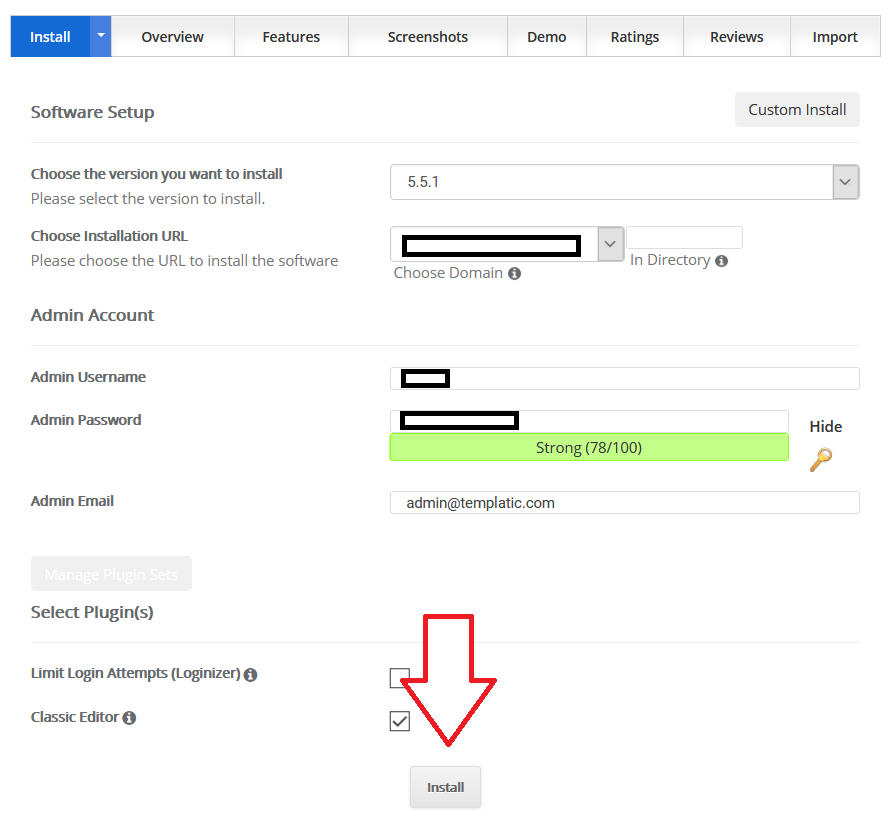
Installing WordPress
Just choose your domain name, admin username, and password, and click on the Install button that we have pointed out in the above image. Your WordPress blog will be up and running in no time.
Choosing the Right Theme
The theme is one of the most important elements of your WordPress niche blog. It gives your blog the design and functionality you want.
However, there’s more to a theme than design and functionality. The better and latest WordPress themes out there are all designed to be fast and SEO-optimized, making the process of ranking your niche blog easier and offering a fast loading time to your visitors which again adds to the SEO value of your website.
Make sure you choose a theme that has a clean and professional look and appeal than something overly fancy with too many unnecessary elements. Remember, your website’s loading speed is one of the most important rankings factors in Google now, and the fancier your theme, the longer your site’s loading time would be in most cases.
In addition, a fancy theme may have a cluttered feel to it, which may turn out to be a kind of distraction for your readers and draw them away from the actual content you want them to read.
Set Up Your WordPress Blog
Once your WordPress blog is up and running, you can log into it and start setting it up.
To install your downloaded premium WordPress theme, click on the Themes option under the Appearance menu on your WordPress dashboard.
Click on the Add New button, and then the Upload Theme button at the top.
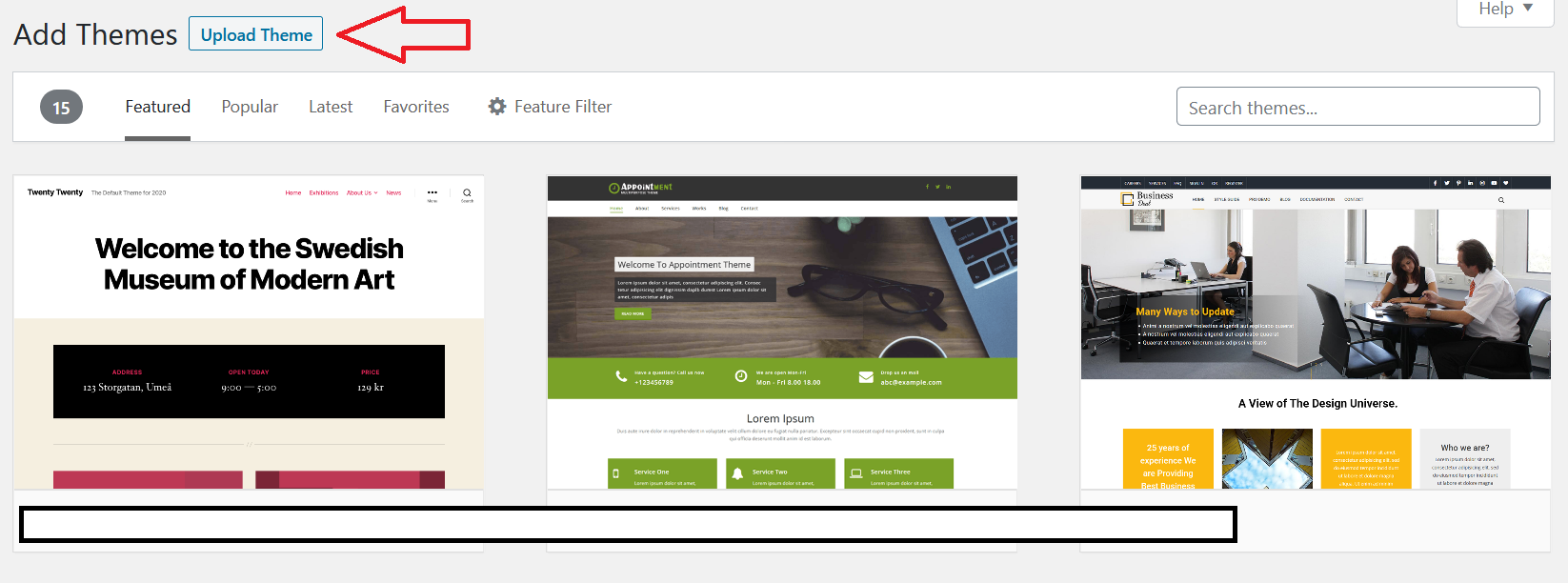
Installing WordPress theme
Choose the downloaded theme file, and then activate the theme after it’s installed on your site.
Then again in your WordPress dashboard, click on the Settings menu. This will take you to the general settings of your WordPress blog.
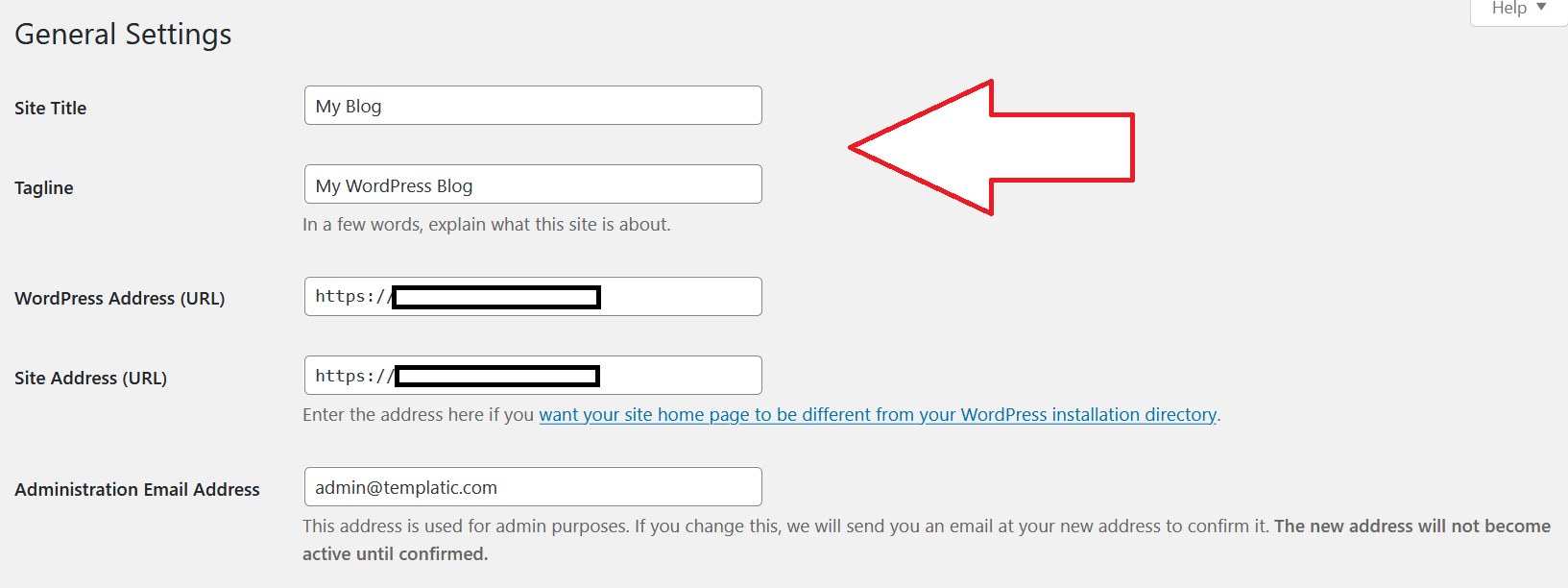
WordPress blog general settings
You just need to put a title and tagline for your site. Make sure they are short and relevant to the niche of your niche blog. Click on the Save Changes button and you’re done.
The only other setting you need to touch is the Permalinks. Just choose the Post name as your permalink structure and click on Save Changes.
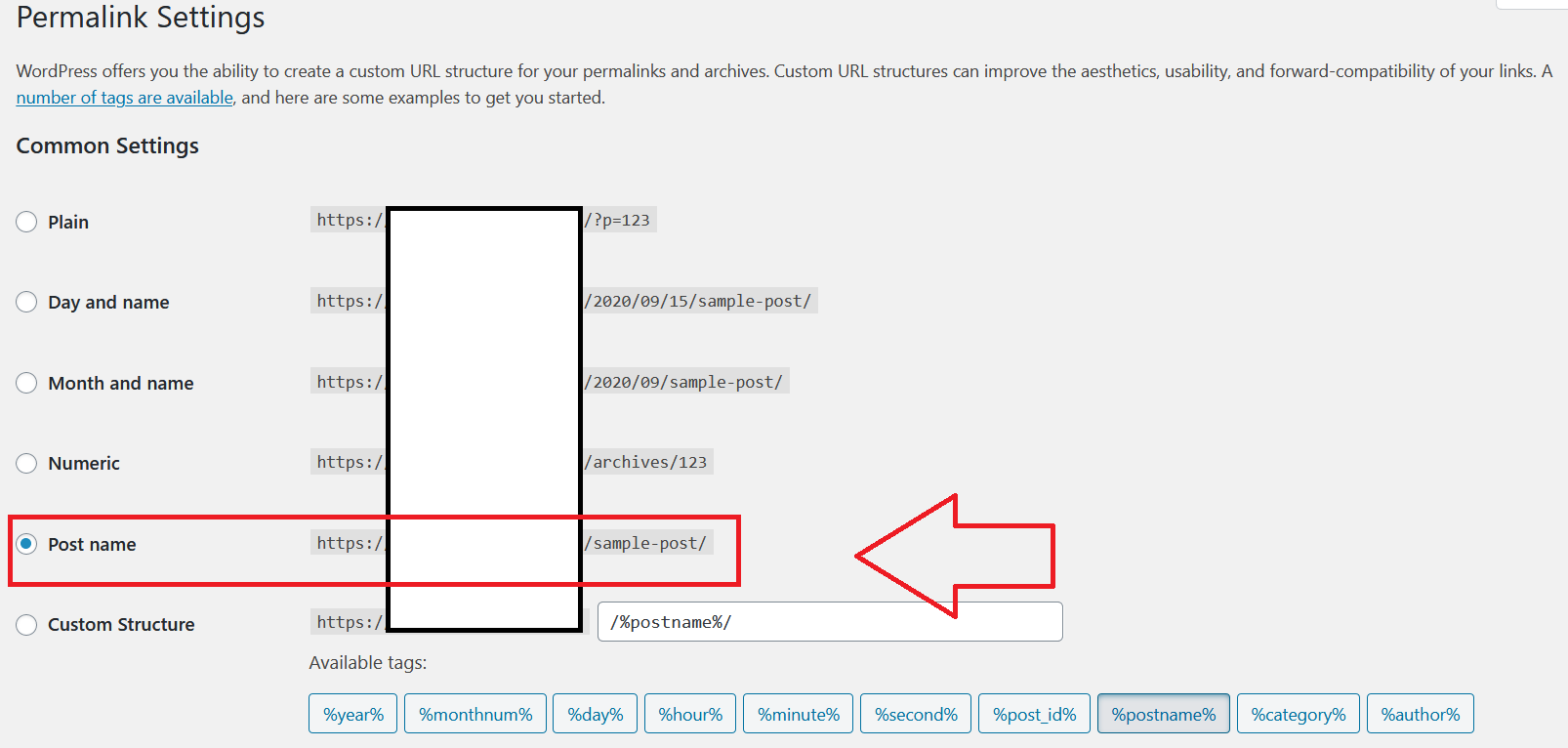
WordPress Permalinks settings
Installing Foundational WordPress Plugins
A great thing about WordPress is that you can build a perfectly functional niche blog in a matter of a few minutes, thanks to the plethora of plugins available to do every task you want. However, be careful about downloading too many plugins, as they may end up slowing down your website.
With that said, here’s a set of foundational WordPress plugins we recommend for a niche blog.
- Yoast SEO – To help you with the SEO of your niche blog
- Contact Form 7 – To allow your readers or other people like advertisers to get in touch with you
- Akismet Anti-Spam – To protect your WordPress blog from comment spam
- W3 Total Cache – To help improve your site’s performance
- Classic Editor – If you want the old WordPress editor, which many beginners find easier to work with than the new Gutenberg editor
To install these plugins, you need to click on the Install Plugin option under the Plugins menu, and then type in the name of each of these plugins in the search bar, click on the Install, and then the Activate button. Do this for all of the plugins listed above and they would all be activated on your WordPress blog in no time.
Building Your Blog with Content
Content is king. It always was, it always will be! And without quality, well-researched, and well-optimized content, no blog could be successful.
So to build a successful niche blog, you need to be prepared to write a fairly large amount of high-quality and SEO-optimized content.
However, we recommend coming up with a content plan first. It will help you stay on top of your posts and get a clear idea of what has been done and what needs to be done.
This will make the process of content creation more productive and faster.
The content plan should start with the keyword research process we explained above. You must find enough keywords for at least your first 25 posts.
Ideally, you would probably need well over 50 posts and anywhere between 6 to 12 months to see any money coming in, but that depends on a variety of factors, including:
- The competition level and profitability of your niche
- Whether you’re monetizing your blog using affiliate marketing or ads
- How good you’re with SEO
- Whether you have some money to invest in the SEO and other marketing channels for your blog
You must note here that although it may feel like a bit of a struggle initially as you need to put in a considerable amount of effort for months before seeing decent returns for your work, once your site starts getting ranked the increase in your site’s earnings may increase exponentially.
Many niche blogs that make less than $50 in their first 6 to 8 months combined often end up making thousands of dollars in their next 6 to 8 months. In other words, you need to have a lot of patient in the beginning and keep pushing through with writing quality, well-researched content even when you don’t seem to be getting much traffic.
Now, there are some things to keep in mind with respect to how your posts need to be as well. Please note that while nothing is set in stone regarding how your posts should be, but there are some general guidelines that seem to work very well in most cases.
- Each post must be at least 700 words long, ideally over 1500 words, as long as the topic allows (don’t fluff up your posts just to reach a particular word count)
- Your posts need to have the main and related keywords sprinkled throughout the content, but in a natural way (don’t try to stuff them in)
- Try to include your main keyword in important areas of your post like the title, H1 and H2 tags (the different sub-headings you will find in WordPress), your post’s URL, meta description, and preferably even in the alt tag of images you upload in your post
Monetizing Your Niche Blog
A niche blog can be monetized in many different ways. You must note here that you don’t necessarily need to stick to just one monetization method.
Although you could design and build your blog with a primary monetization method in mind, you can employ multiple monetization methods to get the most out of your blog’s traffic.
Let us quickly walk you through some of the most effective ways of monetizing a niche blog.
Advertising
The most traditional form of monetization still works pretty well. Although the ad rates have gone lower over the years and can vary greatly from one niche to another, they can generate a pretty significant overall revenue if you come up with a good strategy targeting high CPC keywords in your niche.
As you might be aware, the most popular platform for monetizing your niche blog with ads is Google AdSense. However, these days, many third-party platforms have come up that help you increase your revenue with Google AdSense by using their optimization tools.
So it’s recommended to try them out and see if they make a good difference to your overall earnings. Ezoic is one such platform that integrates well with Google AdSense and optimizes your blog to increase the overall ad revenue.
Affiliate Marketing
Affiliate marketing basically means promoting someone’s products or services as an affiliate and making a commission every time someone buys from them through your blog.
Most big companies have an affiliate program, including Amazon and Walmart. You just need to apply with them and start including affiliate links to relevant products on their site in your blog posts to start generating affiliate commissions.
To make money with affiliate marketing, you need to target a specific type of keyword for the best results.
For example, if you’re promoting physical products from a company like Amazon in the same niche (kitchen) we used as an example above, you may want to target keywords like “best juicers” instead of informational topics like “average cost for kitchen remodel”. These keywords would allow you to directly promote the products and rake in a much higher revenue with affiliate marketing.
However, you must note that these keywords are typically much more competitive than informative keywords, so you should consider targeting them once your blog grows to a good level with the other, less competitive keywords.
Courses
Some niches also allow creating and selling courses to your audience. It’s a great way of making a pretty significant and consistent income from a niche blog if you’re knowledgeable about the niche and know a bit about how to teach others or share your knowledge in the right way.
For example, if we at Templatic wanted to use this monetization channel, we could create courses on topics like how to build and manage a super functional WordPress website.
Selling Own Products
Just like courses, some niches also allow selling your own products. This is very common in “digital” niches like WordPress where you can sell a variety of products from themes to plugins to hosting services and so on, but can also be a feasible option in “physical” niches like those based around specific products like kitchen accessories.
Of course, it involves a lot more work than just monetizing your blog with ads or affiliate marketing and a good amount of traffic as well, but the returns could also be much better than other more common monetization channels.
Taking Action!
Now that we have walked you through the entire process of building a successful niche blog that could generate a consistent monthly income for you, the only thing that you need to do is take action.
Something surprisingly common with people looking to make money with blogging is that they read too much but do too little. However, you must remember that once you have all the foundational information you need to build a successful blog that we shared in this post, the rest of things will come to you only when you start taking action and implementing the things you learned here.
So what are you waiting for? Let us know in the comments how you’re planning to get started after reading this complete guide to building a successful niche blog.




